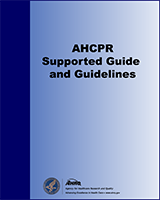NCBI Bookshelf. A service of the National Library of Medicine, National Institutes of Health.
Acute Pain Management Guideline Panel. Acute Pain Management: Operative or Medical Procedures and Trauma. Rockville (MD): Agency for Health Care Policy and Research (AHCPR); 1992 Feb. (AHCPR Clinical Practice Guidelines, No. 1.)
This publication is provided for historical reference only and the information may be out of date.
Relaxation Exercises
Example 1: Deep Breath/Tense, Exhale/Relax, Yawn for Quick Relaxation
- Clench your fists; breathe in deeply and hold it a moment.
- Breathe out slowly and go limp as a rag doll.
- Start yawning.
Additional points: Yawning becomes spontaneous. It is also contagious, so others may begin yawning and relaxing too.
Example 2: Slow Rhythmic Breathing for Relaxation
- Breathe in slowly and deeply.
- As you breathe out slowly, feel yourself beginning to relax; feel the tension leaving your body.
- Now breathe in and out slowly and regularly, at whatever rate is comfortable for you. You may wish to try abdominal breathing. If you do not know how to do abdominal breathing, ask your nurse for help.
- To help you focus on your breathing and breathe slowly and rhythmically: Breathe in as you say silently to yourself, "in, two, three." Breathe out as you say silently to yourself, "out, two, three," or each time you breathe out, say silently to yourself a word such as peace or relax.
- You may imagine that you are doing this in a place you have found very calming and relaxing for you, such as lying in the sun at the beach.
- Do steps 1 through 4 only once or repeat steps 3 and 4 for up to 20 minutes.
- End with a slow deep breath. As you breathe out say to yourself "I feel alert and relaxed."
Additional points: If you intend to do this for more than a few seconds, try to get in a comfortable position in a quiet environment, you may close your eyes or focus on an object. This technique has the advantage of being very adaptable in that it may be used for only a few seconds or for up to 20 minutes.
Example 3: Peaceful Past
Something may have happened to you a while ago that brought you peace and comfort. You may be able to draw on that past experience to bring you peace or comfort now. Think about these questions:
- Can you remember any situation, even when you were a child, when you felt calm, peaceful, secure, hopeful, comfortable?
- Have you ever daydreamed about something peaceful? What were you thinking of?
- Do you get a dreamy feeling when you listen to music? Do you have any favorite music?
- Do you have any favorite poetry that you find uplifting or reassuring?
- Have you ever been religiously active? Do you have favorite readings, hymns, or prayers?
Additional points: Very likely some of the things you think of in answer to these questions can be recorded for you, such as your favorite music or a prayer. Then you can listen to the tape whenever you wish. Or, if your memory is strong, you may simply close your eyes and recall the events or words.
Adapted with permission from McCaffery, M. & Beebe, A. (1989). Pain: Clinical manual for nursing practice. St. Louis: CV Mosby.
- Appendix E - Acute Pain Management: Operative or Medical Procedures and TraumaAppendix E - Acute Pain Management: Operative or Medical Procedures and Trauma
Your browsing activity is empty.
Activity recording is turned off.
See more...
